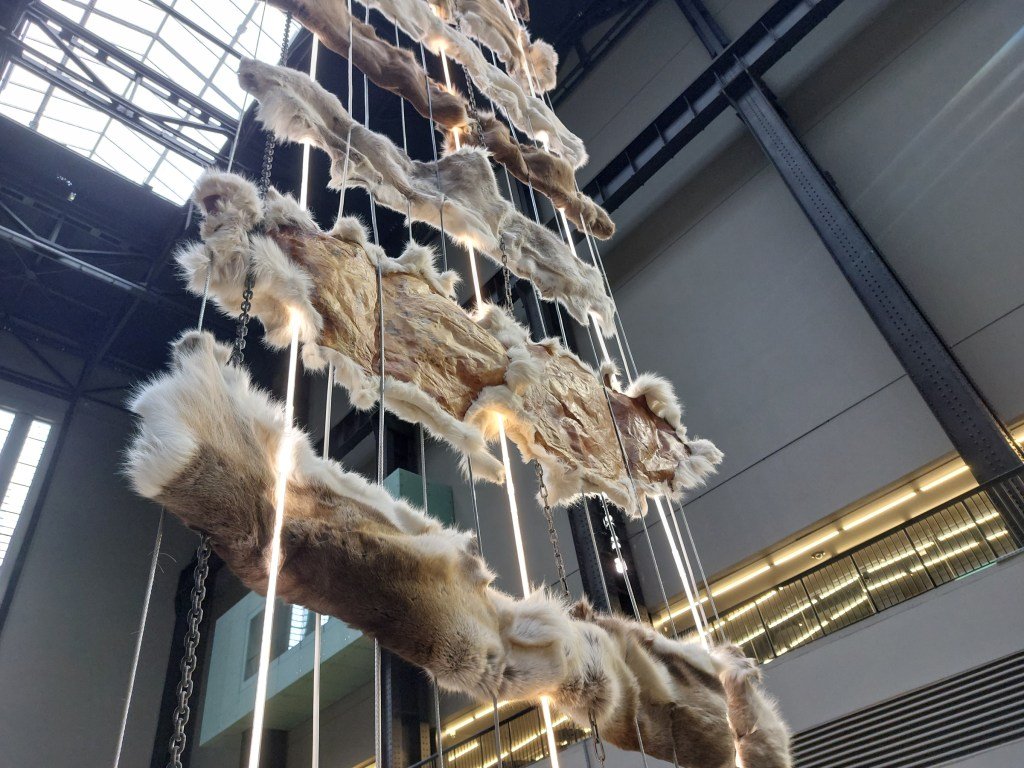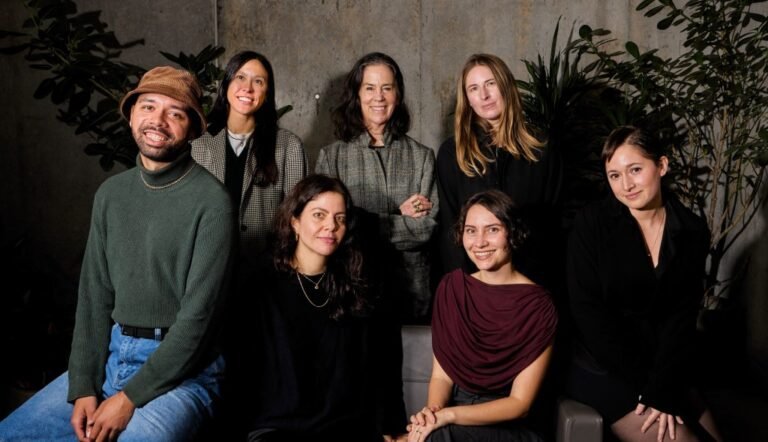

LONDON — Electrical cables now run from floor to ceiling in the Tate Modern’s cavernous Turbine Hall, its largest and most prestigious exhibition space — and the site where polluting coal fire once generated enormous amounts of electricity. In Sámi artist Máret Ánne Sara’s monumental sculpture, reindeer hides interweave the taut wires like the rungs of a ladder. Her juxtaposition of the industrial and the natural asks us to rethink what we mean by power — and reminds us that the infrastructures for generating energy have only been pushed out of sight for urbanites. They continue to have an enormous impact on the ecologies of more remote regions, and the people who live in them.
One of these regions is Sápmi, the territory of the Indigenous Sámi people spanning some of the northernmost parts of Norway, Sweden, Finland, and Russia. Members of Sara’s family have been reindeer herders there for many generations. Here, the yoking of the reindeer hides to metal wires feels like a visceral visualization of how that way of life and unique relationship with the environment is now threatened by the climate crisis and mining, infrastructure, and power generation projects. But it also suggests that the power in the lit wires could be derived from the reindeer themselves, if we were willing to employ a different understanding of what “power” means.
One-half of the work’s title, “Goavve,” is a Sámi term referring to a phenomenon of extreme weather in which fluctuating temperatures melt and re-freeze snow, resulting in hard ice crusts that the reindeer are unable to break through to find food in winter. In choosing such a technical term, Sara seems to argue for a framework of power derived from Indigenous ancestral and ecological knowledge — not in the vague sense of “wisdom” but in the hard facts of science. This is a form of investigating and understanding that honors the more-than-human world, rather than seeking to subdue it.

The second half of her installation is an inviting maze-like structure based on the reindeer’s nose, a natural marvel designed to heat air to 175°F (~80°C) in a single second. Inside, there are seats covered in soft reindeer hide where visitors can listen to stories of Sápmi through headphones, while speakers also play the intermingled sounds of reindeer calls and joiking, a form of Sámi singing that evokes a specific person or place, such as a summer reindeer pasture. Scents also permeate the structure, from native plants to the artist’s own breastmilk, although these are very subtle, almost to the point of being undetectable. Nevertheless, the experience is deliberately multisensory, an invitation to consider non-visual forms of perception — another way in which Sara advocates for alternative knowledge structures.
Many Europeans are not even aware that there are any Indigenous peoples left in Europe, so this commission will undoubtedly raise awareness of the plight of the Sámi people, as well as the potential power of their worldview. Notably, international recognition and understanding of Sámi culture have been on the rise in recent years, in great part through the dissemination of work by artists such as Sara herself at the Venice Biennale and Outi Pieski at Tate St Ives.
However, some have criticized Sara’s Turbine Hall project for not being big or spectacular enough, sometimes ignoring the content and, in particular, the context of her work. Certainly, it is not the most visually memorable installation that this space has ever seen — but it feels wrong to judge this work on what is absent. What is present is a nuanced and meditative exploration of an interconnected community and ecosystem on the brink of disaster, where temperature fluctuations and ongoing extractivism are damaging heritage and environment. The canary in the coal mine, as it were, for our lives in more temperate areas. We could all undoubtedly benefit from taking Sámi science seriously as we collectively hurtle toward even more cataclysmic changes.


Hyundai Commission: Máret Ánne Sara continues at Tate Modern (Bankside London), through April 6, 2026. The exhibition is curated by Helen O’Malley and Hannah Gorlizki.


